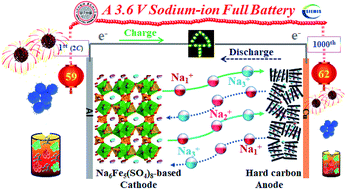At the cathode is occuring katabasis of electrons, downwards to the electrode, i.e. It means the cathode is. The negative electrode at electrolysis, accepting electrons from the external power source. The positive electrode for power cells. Drawing electrons from the circuit. The electrode at which reduction occurs and to which cations are attracted. Adj., adj cathod´ic. Cathode definition, the electrode or terminal by which current leaves an electrolytic cell, voltaic cell, battery, etc. Cathode (styled as CATHODE) is an engine built by the Creative Assembly in partnership with AMD for the 2014 video game Alien: Isolation. It is a highly modified version of the engine created for an earlier title, Viking: Battle for Asgard. The trademark for Cathode's name was filed by SEGA on August 26th 2013, and eventually granted February 20th 2014. The Cathode engine was named after its. The cathode is the electrode from which electrical current departs. The other electrode is named the anode. Keep in mind, the conventional definition of current describes the direction a positive electric charge moves, while most of the time electrons are true current carries.
Learning Objective
- Define a cathode ray
Key Points
- Electrons accelerated to high velocities travel in straight lines through an empty cathode ray tube and strike the glass wall of the tube, causing excited atoms to fluoresce or glow.
- Researchers realized that something was traveling from the anode when objects placed in the tube in front of it could cast a shadow on the glowing wall. Cathode rays carry electronic currents through the tube. Electrons were first discovered as the constituents of cathode rays.
- J.J. Thomson used the cathode ray tube to determine that atoms had small negatively charged particles inside of them, which he called “electrons.”
Terms
- crookes tubeAn early experimental electrical discharge tube, invented by English physicist William Crookes and others around 1869-1875, in which cathode rays, streams of electrons, were discovered
- cathode raysStreams of electrons observed in vacuum tubes
Cathode Rays
Cathode rays (also called an electron beam or an e-beam) are streams of electrons observed in vacuum tubes. If an evacuated glass tube is equipped with two electrodes and a voltage is applied, the glass opposite the negative electrode is observed to glow from electrons emitted from the cathode. Electrons were first discovered as the constituents of cathode rays. The image in a classic television set is created by focused beam of electrons deflected by electric or magnetic fields in cathode ray tubes (CRTs).
Cathode rays are so named because they are emitted by the negative electrode, or cathode, in a vacuum tube. To release electrons into the tube, they must first be detached from the atoms of the cathode. The early cold cathode vacuum tubes, called Crookes tubes, used a high electrical potential between the anode and the cathode to ionize the residual gas in the tube. The electric field accelerated the ions and the ions released electrons when they collided with the cathode.
Modern vacuum tubes use thermionic emission, in which the cathode is made of a thin wire filament that is heated by a separate electric current passing through it. The increased random heat motion of the filament atoms knocks electrons out of the atoms at the surface of the filament and into the evacuated space of the tube. Since the electrons have a negative charge, they are repelled by the cathode and attracted to the anode. They travel in straight lines through the empty tube. The voltage applied between the electrodes accelerates these low mass particles to high velocities.
Cathode rays are invisible, but their presence was first detected in early vacuum tubes when they struck the glass wall of the tube, exciting the atoms of the glass and causing them to emit light—a glow called fluorescence. Researchers noticed that objects placed in the tube in front of the cathode could cast a shadow on the glowing wall, and realized that something must be traveling in straight lines from the cathode. After the electrons reach the anode, they travel through the anode wire to the power supply and back to the cathode, so cathode rays carry electric current through the tube.
History of Cathode Rays
In 1838, Michael Faraday passed a current through a rarefied air-filled glass tube and noticed a strange light arc with its beginning at the cathode (negative electrode) and its end almost at the anode (positive electrode).
Crookes Tubes
In the 1870s, British physicist William Crookes and others were able to evacuate rarefied tubes to a pressure below 10−6 atm. These were called Crookes tubes. Faraday had been the first to notice a dark space just in front of the cathode, where there was no luminescence. This came to be called the cathode dark space, Faraday dark space, or Crookes dark space.
Crookes found that as he pumped more air out of the tubes, the Faraday dark space spread down the tube from the cathode toward the anode, until the tube was totally dark. But at the anode (positive) end of the tube, the glass of the tube itself began to glow. What was happening was that as more air was pumped from the tubes, the electrons could travel farther, on average, before they struck a gas atom. By the time the tube was dark, most of the electrons could travel in straight lines from the cathode to the anode end of the tube without a collision. With no obstructions, these low mass particles were accelerated to high velocities by the voltage between the electrodes. These were the cathode rays. When they reached the anode end of the tube, they were traveling so fast that, although they were attracted to it, they often flew past the anode and struck the back wall of the tube. When they struck atoms in the glass wall, they excited their orbital electrons to higher energy levels, causing them to fluoresce.
Later researchers painted the inside back wall with fluorescent chemicals such as zinc sulfide, to make the glow more visible. Cathode rays themselves are invisible, but this accidental fluorescence allowed researchers to notice that objects in the tube in front of the cathode, such as the anode, cast sharp-edged shadows on the glowing back wall. In 1869, German physicist Johann Hittorf was first to realize that something must be traveling in straight lines from the cathode to cast the shadows. Eugene Goldstein named them cathode rays.
J.J. Thomson’s Experiment
J.J. Thomson studied cathode ray tubes and came up with the idea that the particles in the cathode beams must be negative because they were repelled by negatively charged items (either the cathode or a negatively charged plate in the cathode ray tube) and attracted by positively charged items (either the anode or the positively charged plate in the cathode ray tube). He called these super tiny pieces of the atom, “electrons.” Through his experiments, Thomson disproved Dalton’s atomic theory, because Dalton’s atomic theory stated that atoms were the smallest piece of the matter in the universe and they were indivisible. Clearly, the presence of electrons negated these portions of Dalton’s atomic theory.
Show SourcesBoundless vets and curates high-quality, openly licensed content from around the Internet. Red crucible 2. This particular resource used the following sources:
http://www.boundless.com/
Boundless Learning
CC BY-SA 3.0.
http://en.wikipedia.org/wiki/crookes%20tube
Wikipedia
CC BY-SA 3.0.
http://en.wikipedia.org/wiki/cathode%20rays
Wikipedia
CC BY-SA 3.0.
http://en.wikipedia.org/wiki/Cathode_rays
Wikipedia
Pokemon fire red nuzlocke rom. CC BY-SA 3.0.
 Also found in: Thesaurus, Medical, Financial, Acronyms, Encyclopedia, Wikipedia.
Also found in: Thesaurus, Medical, Financial, Acronyms, Encyclopedia, Wikipedia.cath·ode
(kăth′ōd′)n.Cathode Ray Tube
Abbr. ka
kacathode
(ˈkæθəʊd) ncath•ode
(ˈkæθ oʊd)n.
cath·ode
(kăth′ōd′)cathode
Cathode Positive Or Negative
| Noun | 1. | cathode - a negatively charged electrode that is the source of electrons entering an electrical device cold cathode - a cathode that is a source of electrons without being heated electrode - a conductor used to make electrical contact with some part of a circuit electrolytic cell - a cell containing an electrolyte in which an applied voltage causes a reaction to occur that would not occur otherwise (such as the breakdown of water into hydrogen and oxygen) photocathode - a cathode that emits electrons when illuminated electron tube, thermionic tube, thermionic vacuum tube, thermionic valve, vacuum tube, tube - electronic device consisting of a system of electrodes arranged in an evacuated glass or metal envelope anode - a positively charged electrode by which electrons leave an electrical device |
| 2. | cathode - the positively charged terminal of a voltaic cell or storage battery that supplies current storage battery, accumulator - a voltaic battery that stores electric charge depot, terminal, terminus - station where transport vehicles load or unload passengers or goods galvanic cell, primary cell, voltaic cell - an electric cell that generates an electromotive force by an irreversible conversion of chemical to electrical energy; cannot be recharged anode - the negatively charged terminal of a voltaic cell or storage battery that supplies current |
cathode
[ˈkæθəʊd]cathode ray tubeN → tubom de rayoscatódicos

cathode
[ˈkæθəʊd]n → cathodefcathode-ray tube [ˈkæθəʊdreɪ]Cathode Positive Or Negative
nCathode Ray Tube Amusement Device
→ tubemcathodiquecathode
cathode
:Want to thank TFD for its existence? Tell a friend about us, add a link to this page, or visit the webmaster's page for free fun content.
Link to this page:




